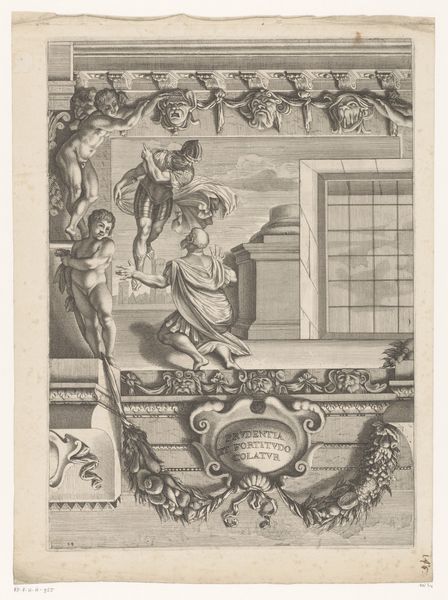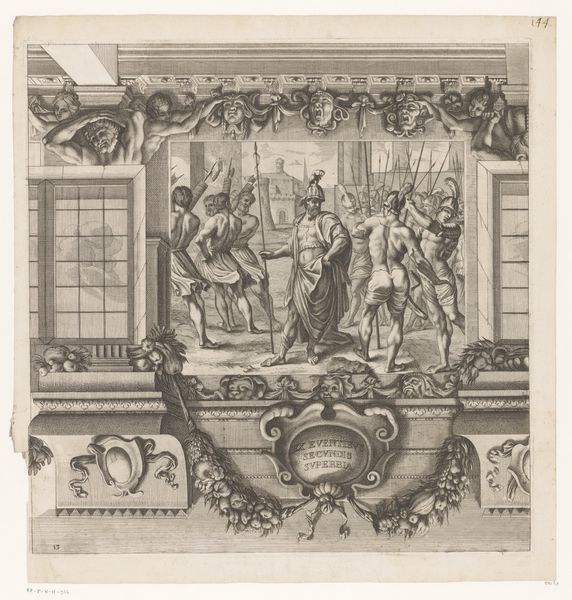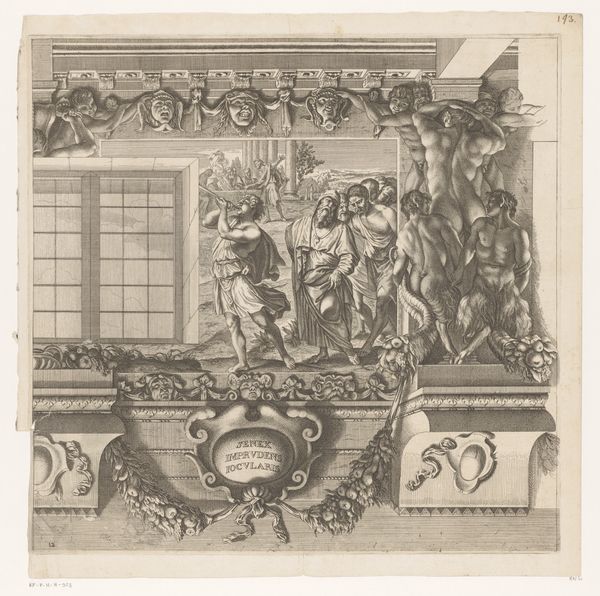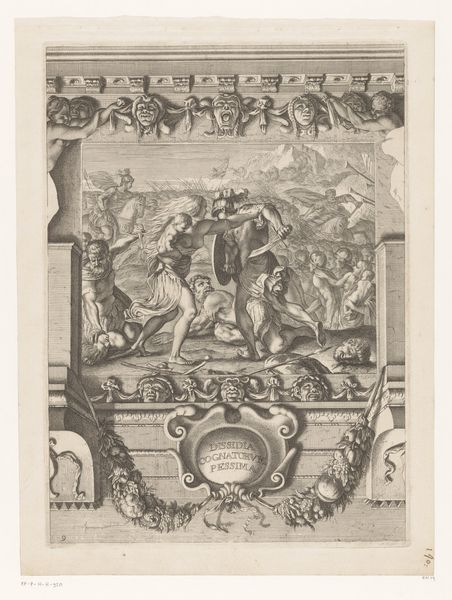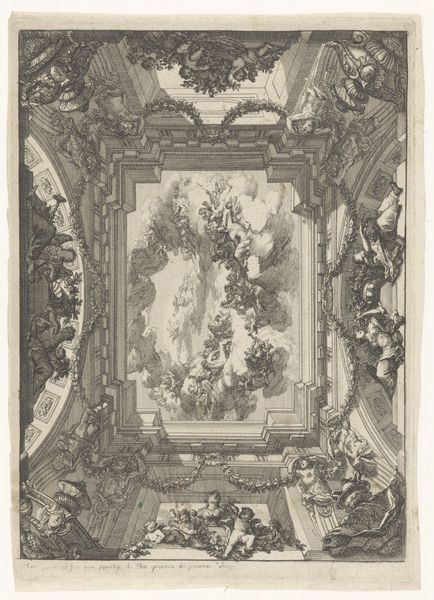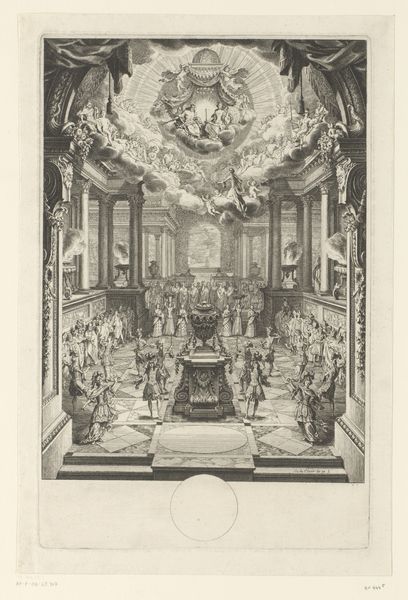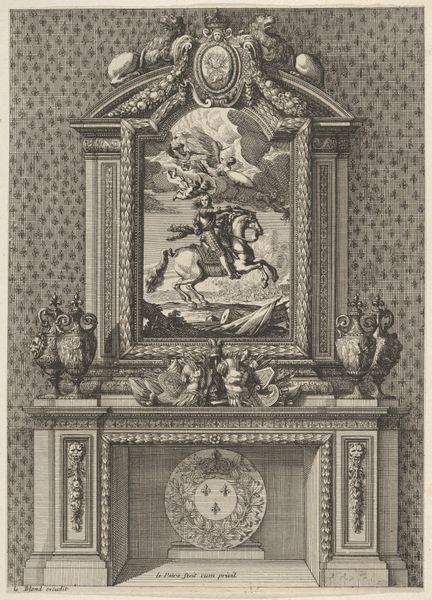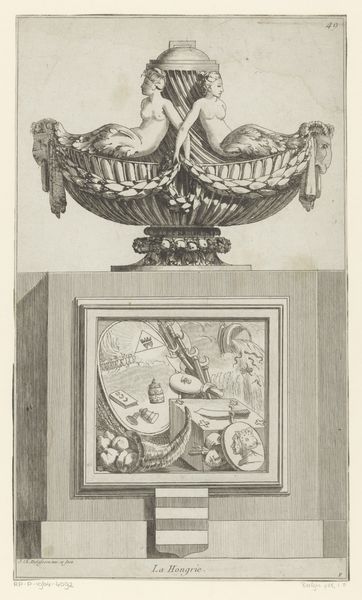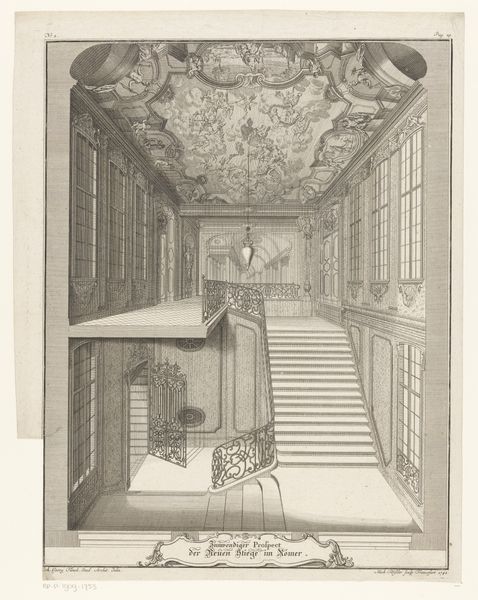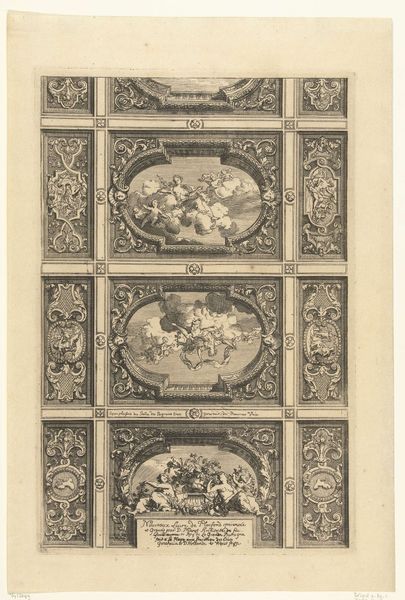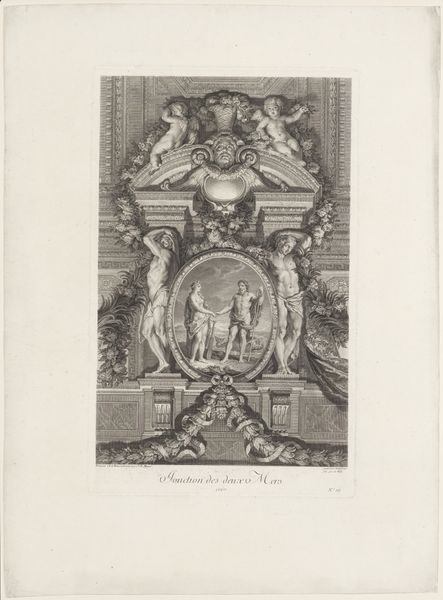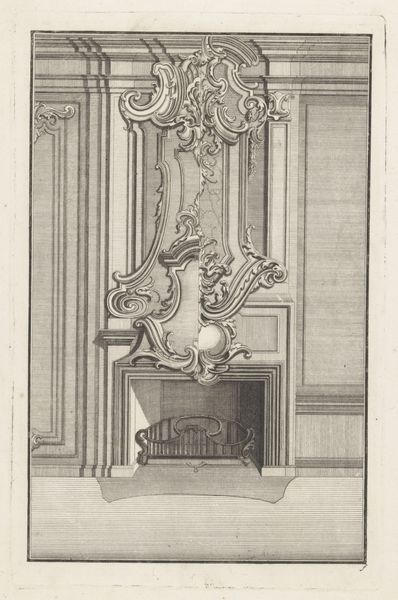
print, engraving
#
baroque
# print
#
figuration
#
cityscape
#
history-painting
#
engraving
Dimensions: height 461 mm, width 352 mm
Copyright: Rijks Museum: Open Domain
Louis de Châtillon made this print called "Plague in Rome". Although undated, it offers a glimpse into the 17th-century experience of epidemics. The print depicts a window overlooking a scene of death and devastation in Rome. The window frame itself is adorned with grotesque masks, garlands, and classical figures, suggesting a tension between order and chaos, beauty and decay. Created during a period of frequent outbreaks, the print uses visual codes to convey the terror and helplessness felt during such times. Rome, a city with deep religious and historical significance, was repeatedly struck by plagues, leading to social disruption and economic hardship. We can consider the print's role in shaping public perceptions of disease and death. Was it intended as a cautionary tale? Or perhaps a commentary on the limitations of human power in the face of nature's wrath? By studying contemporary accounts, medical treatises, and public health policies, we can begin to understand how the print reflected and shaped the social and institutional responses to the plague.
Comments
No comments
Be the first to comment and join the conversation on the ultimate creative platform.
